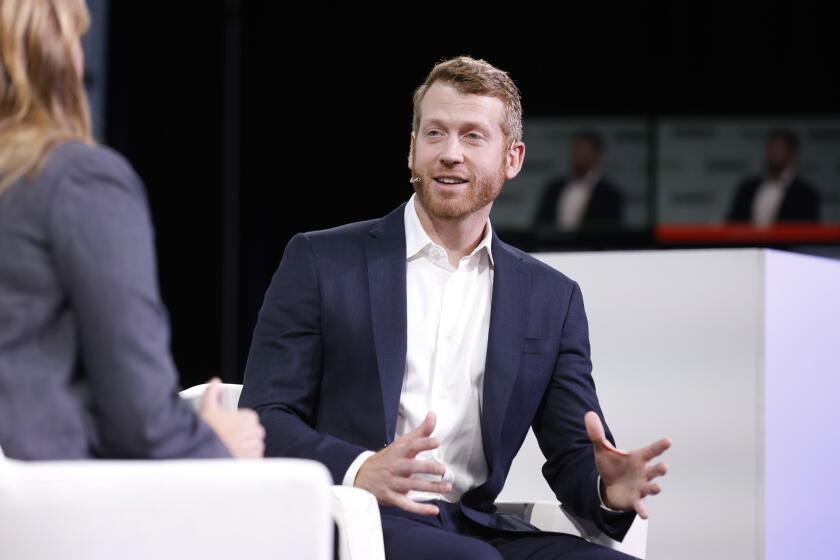Zoox’s pill-shaped robotaxis become latest self-driving cars to hit California’s streets

- Share via
Is it a toaster? Is it a pill on wheels? No, it’s Zoox’s funny-looking robotaxi, the latest fully autonomous vehicle to hit the streets of California.
Zoox’s self-driving vehicles began rolling out in San Francisco’s SoMa neighborhood this week, and are expected to compete with robotaxis designed by Waymo, which started offering rides to the public in San Francisco and Los Angeles earlier this year.
But not quite yet. For now, Zoox’s driverless trips will be for testing and research purposes only.
“Since 2017, our test fleet has autonomously navigated San Francisco streets with a safety driver,” Zoox Chief Executive Aicha Evans said in a statement. “Now that we’ve passed all critical safety measures, we are excited to begin testing our robotaxi in this wonderful city.”
The Amazon-owned company also has begun testing its driverless vehicles near its Foster City, Calif., headquarters and around the Las Vegas Strip.

If all proves successful, the goal is to start inviting the public on board next year.
Zoox’s vehicle design, like its name, is decidedly futuristic. The pill-shaped vehicle is essentially one giant cabin on wheels, featuring two spacious benches facing each other and no middle or driver’s seat.
“To us, a better ride meant creating an environment similar to a lounge where social connections stick and everyday activities aren’t interrupted. It had to be face-to-face,” Chris Stoffel, director of studio engineering, said in a statement on the four-seat design.
Zoox vehicles were custom-built for self-driving and feature no traditional manual controls — not even a steering wheel. Waymo, on the other hand, uses commercially available Jaguar I-Pace sport utility vehicles outfitted with sensors.
During the day, Zoox riders can view the sky through the sunroof, while at night the ceiling is illuminated with small, twinkling lights like a starry sky.
But not everyone sees the expansion of self-driving cars as a heavenly delight.
In February, a crowd swarmed a Waymo car in San Francisco’s Chinatown, scrawling graffiti, smashing windows and setting the vehicle on fire.
Tensions over autonomous cars were already on the rise after a driverless Cruise car, owned by General Motors, hit a woman in downtown San Francisco and dragged her 20 feet in October 2023. That incident led state regulators to temporarily revoke the company’s permits, the National Highway Traffic Safety Administration to open an investigation and Cruise to recall all of its vehicles.
A Cruise robotaxi dragged an injured woman 20 feet. The company misled reporters about the facts, and maybe state regulators too.
In November 2023, Los Angeles Mayor Karen Bass asked state regulators to increase their scrutiny of companies that operate autonomous vehicles.
This year, state Sen. Dave Cortese (D-San Jose) introduced a bill that would have allowed cities and counties to establish their own regulations for autonomous vehicles. Although the bill passed the Senate, Cortese later pulled it after the Assembly Committee on Transportation presented major amendments.
Against this backdrop of public unease, Zoox is stressing to San Franciscans that it has prepared for this new rollout.
“We’ve rigorously tested and validated our AI stack in multiple cities over the last seven years in preparation for the deployment of our robotaxi fleet,” Jesse Levinson, co-founder and chief technology officer, said in a statement.
The company also is touting safety features including six different airbag types, sensors that it says prevent the car from starting until everyone is buckled up and software designed to prevent collisions.
More to Read
Sign up for Essential California
The most important California stories and recommendations in your inbox every morning.
You may occasionally receive promotional content from the Los Angeles Times.












